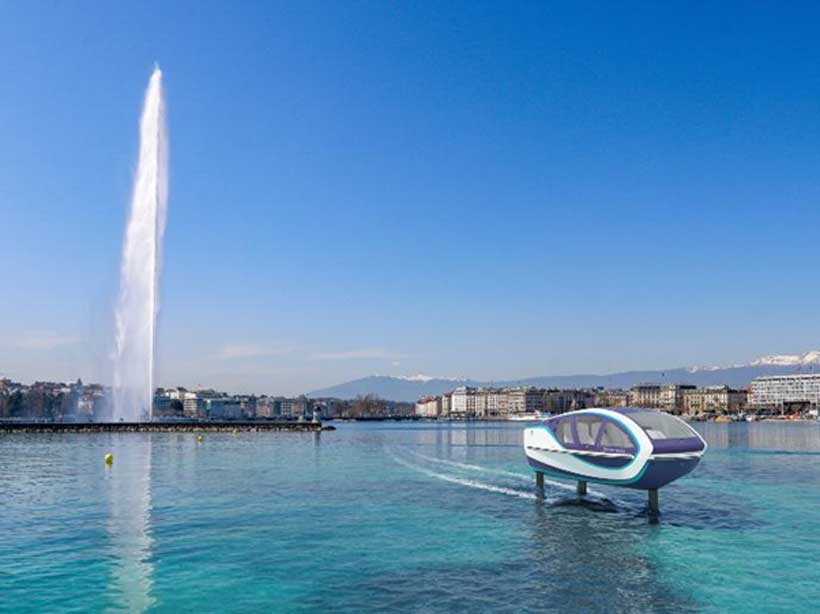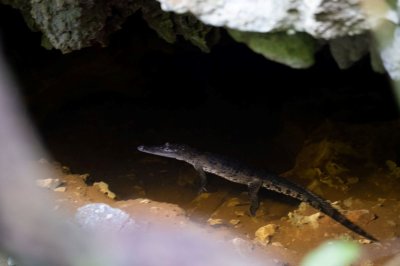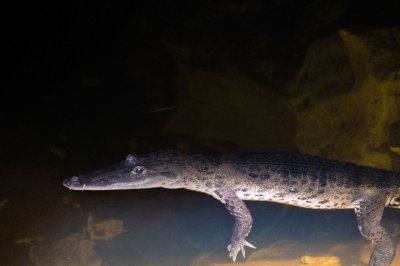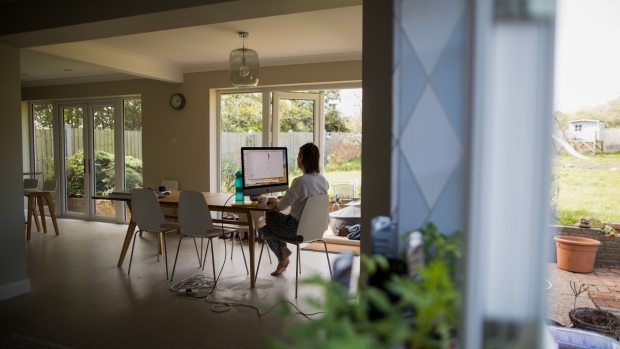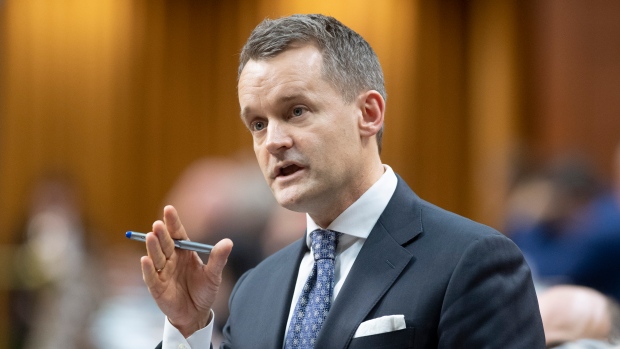Ukraine President Zelensky turns down US offer to flee Kyiv, says need ammunition, not a ride
Ukrainian President Volodymyr Zelensky has rejected the US government’s offer to evacuate, insisting that he would stay and fight the Russians as they invade his country.
New Delhi

Ukrainian President Volodymyr Zelensky has rejected the US government’s offer to evacuate Kyiv (AP photo)
As Russian troops circled Kyiv, Ukrainian President Volodymyr Zelensky turned down the US government’s offer to evacuate, insisting that he would stay and fight.
“The fight is here; I need ammunition, not a ride,” Zelensky said, reported AP citing a senior American intelligence official with direct knowledge of the conversation.
The US offer to Zelensky was based off of intelligence that Russian President Vladimir Putin is determined to overthrow Ukraine’s government and replace it with a regime of his own.
Zelensky has previously stated that he is Moscow’s “No. 1 target” and that Russian "sabotage forces" were in Kyiv and hunting for him and his family.
READ | 1,000 Russian troops killed, 211 Ukraine military structures attacked: Claims and counter-claims
During a video conference with European Union (EU) leaders on Thursday, the Ukrainian premier reportedly told them that "this might be the last time you see me alive".

Russian troops enter Kyiv after taking control of Chernobyl nuclear power plant, says Ukrainian President
Despite a relentless onslaught from the militarily mightier Russia, Ukrainian forces have continued to resist Russian troops' advance into Kyiv. Even as casualties mount on both sides, Zelensky has remained resolute and physically present in his nation's capital, telling Ukrainians to stand their ground as "the fate of Ukraine is being decided now."
READ | ‘We have to run’: Russian invasion triggers exodus from Ukraine
Russian forces launched coordinated missile and artillery attacks on Ukrainian cities on Saturday including the capital, Kyiv, where gunfire erupted near government buildings in the city centre, reported Reuters.
Ukrainian authorities have urged citizens to help defend Kyiv from advancing Russian forces. Residents of the capital were told by the defence ministry to make petrol bombs to repel the invaders.
In a chilling message, Vladimir Putin has called on the Ukrainian army to overthrow the country's democratically elected leadership in Kyiv. The Russian President referred to the Ukrainian leadership as "terrorists" and "a gang of drug addicts and neo-Nazis".
WATCH | Russian troops disguised as national police shot Ukrainian soldiers near Vasylkiv, say reports
As Russian missiles pounded Kyiv, Ukrainian President Volodymyr Zelensky said weapons from partners are on the way.
India Today Web Desk

As Russian missiles pounded Kyiv, Ukrainian President Volodymyr Zelensky said weapons from partners are on the way.
As the Russian invasion of Ukraine entered day three with heightened military aggression, Ukrainian President Volodymyr Zelensky said weapons from partners are on the way.
He tweeted, "A new day on the diplomatic frontline began with a conversation with @EmmanuelMacron. Weapons and equipment from our partners are on the way to Ukraine. The anti-war coalition is working!"
"We're all here. Our military is here. Citizens in society are here. We're all here defending our independence, our country, and it will stay this way," Zelensky said standing outside the presidency building.
On Thursday, he called on all citizens who were ready to defend the country from Russian forces to come forward, saying Kyiv would issue weapons to everyone who wants them.
Russia launched an all-out invasion of Ukraine by land, air and sea on Thursday, the biggest attack by one state against another in Europe since World War Two and confirmation of the worst fears of the West.
Street fighting begins in Kyiv as Ukraine president refuses to evacuate

Kyiv officials are warning residents that street fighting is underway against Russian forces
as Ukraine’s president refused to leave the city (Emilio Morenatti/AP)
- Russia vetoes UN resolution to end Ukraine invasion - READ MORE
- UK and US impose sanctions on Putin as the noose tightens around KyivREAD MORE
- Ukraine and Russia discussing location and time for talks - Zelenskiy spokesman - READ MORE
Kyiv officials are warning residents that street fighting is underway against Russian forces as Ukraine’s president refused to leave the city.
The warning issued on Saturday advised residents to remain in shelters, to avoid going near windows or on balconies and to take precautions against being hit by debris or bullets.
Russian troops continued to storm toward Ukraine’s capital early on Saturday as explosions reverberated through the city and the president urged the country to “stand firm” against the siege that could determine its future. He refused American help to evacuate, saying: “The fight is here.”
Hundreds of casualties were reported in the fighting, which included shelling that sliced through a Kyiv apartment building and pummelled bridges and schools. There also were growing signs that Russia may be seeking to overthrow Ukraine’s government, which US officials have described as Russian President Vladimir Putin’s ultimate objective.
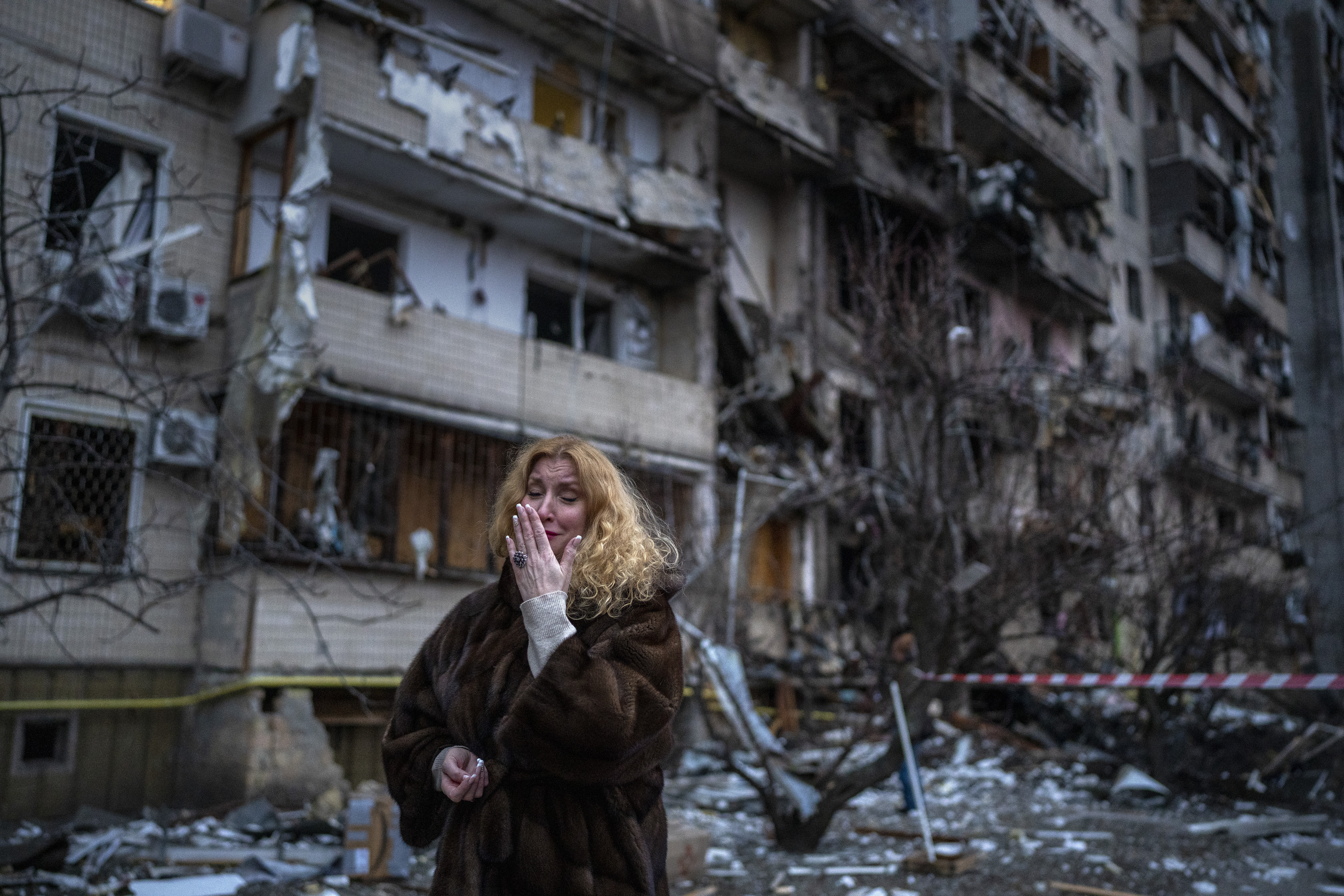
Ukrainian President Volodymyr Zelensky has survived a night of Russian assaults on Kyiv and instructed people not to believe “fake news”.
“Good morning everybody. Do not believe fake news. I am here,” Mr Zelensky said in Ukrainian in a selfie video posted to social media.
“We will not lay down our weapons. We will defend our Country. Our weapons are our strength. This is our land. Our country. Our children. We will protect all of them,” he added in the video, which appeared to be shot in downtown Kyiv.
Mr Zelensky was urged to evacuate Kyiv at the behest of the US government but turned down the offer, according to a senior American intelligence official with direct knowledge of the conversation. The official quoted the president as saying that “the fight is here” and that he needed anti-tank ammunition but “not a ride”.
The mayor of a city south of the Ukrainian capital says the country’s military has fended off a Russian attempt to take control of a military air base.
Natalia Balansynovych, mayor of Vasylkiv, about 25 miles south of Kyiv, said Russian airborne forces landed near the city overnight and tried to seize the base. She added that fierce fighting also raged in Vasylkiv’s central street.
She said Ukrainian forces repelled the Russian attacks, and the situation is now calm. Ms Balansynovych said there were heavy casualties, but did not give any numbers.
Meanwhile, the mayor of the Ukrainian capital said a missile has hit an apartment building but no casualties were immediately reported.
Vitali Klitschko said the missile slammed into a high-rise building on the south-western outskirts of Kyiv near Zhuliany airport. He said rescue workers were heading there.
He posted an image on a messaging app showing a gaping hole on one side of the building that ravaged apartment units and several stores.
For their part, US defence officials believe the Russian offensive has encountered considerable resistance and is proceeding slower than Moscow had envisioned, though that could change quickly.
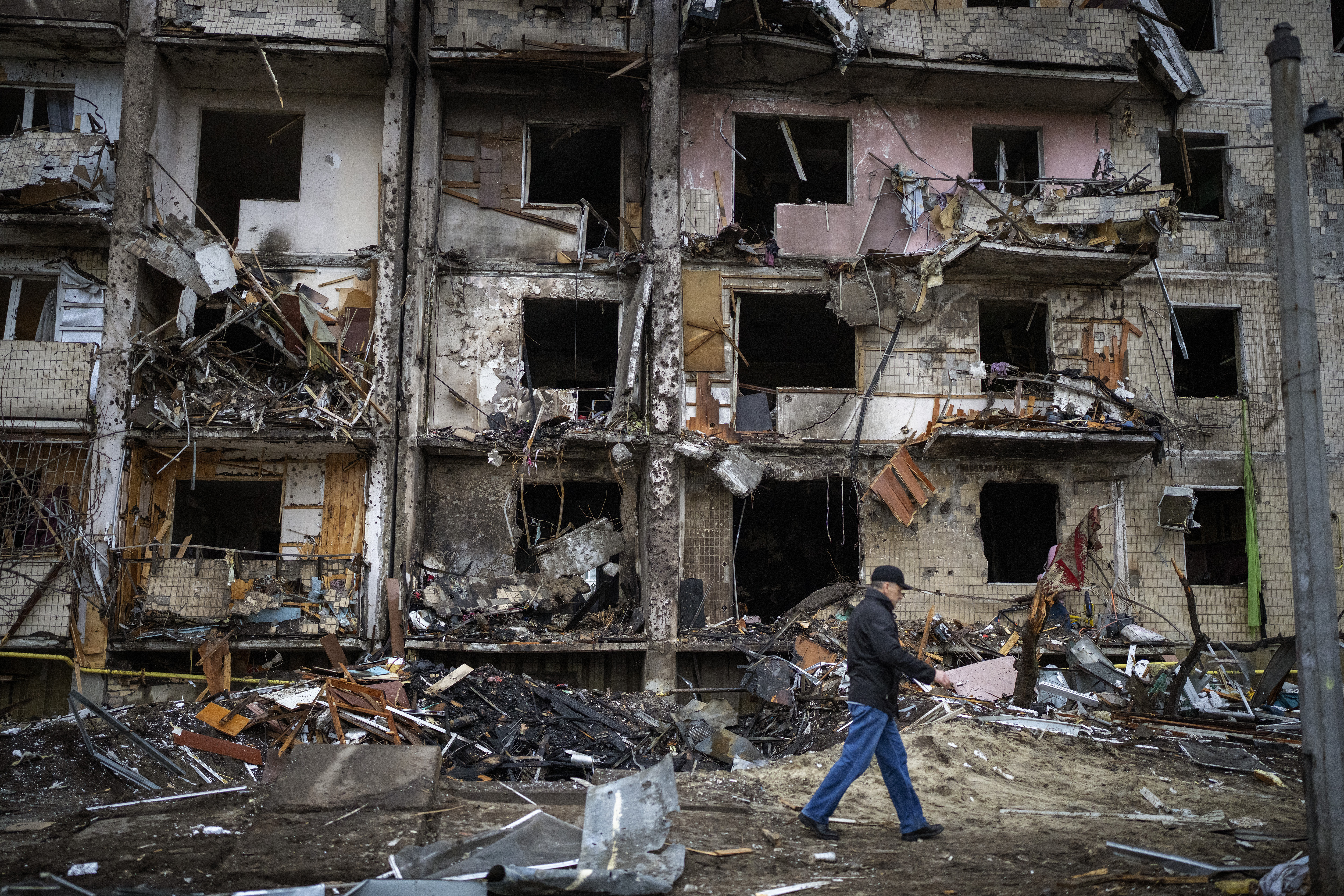
The Kremlin accepted Kyiv’s offer to hold talks, but it appeared to be an effort to squeeze concessions out of Ukraine’s embattled leader instead of a gesture toward a diplomatic solution.
As fighting persisted, Ukraine’s military reported shooting down an II-76 Russian transport plane carrying paratroopers near Vasylkiv, a city 25 miles south of Kyiv, an account confirmed by a senior American intelligence official. It was unclear how many were on board, with transport planes able to carry up to 125 paratroopers.
A second Russian military transport plane was shot down near Bila Tserkva, 50 miles south of Kyiv, according to two American officials with direct knowledge of conditions on the ground in Ukraine who spoke to the Associated Press.
The Russian military has not commented on either plane.
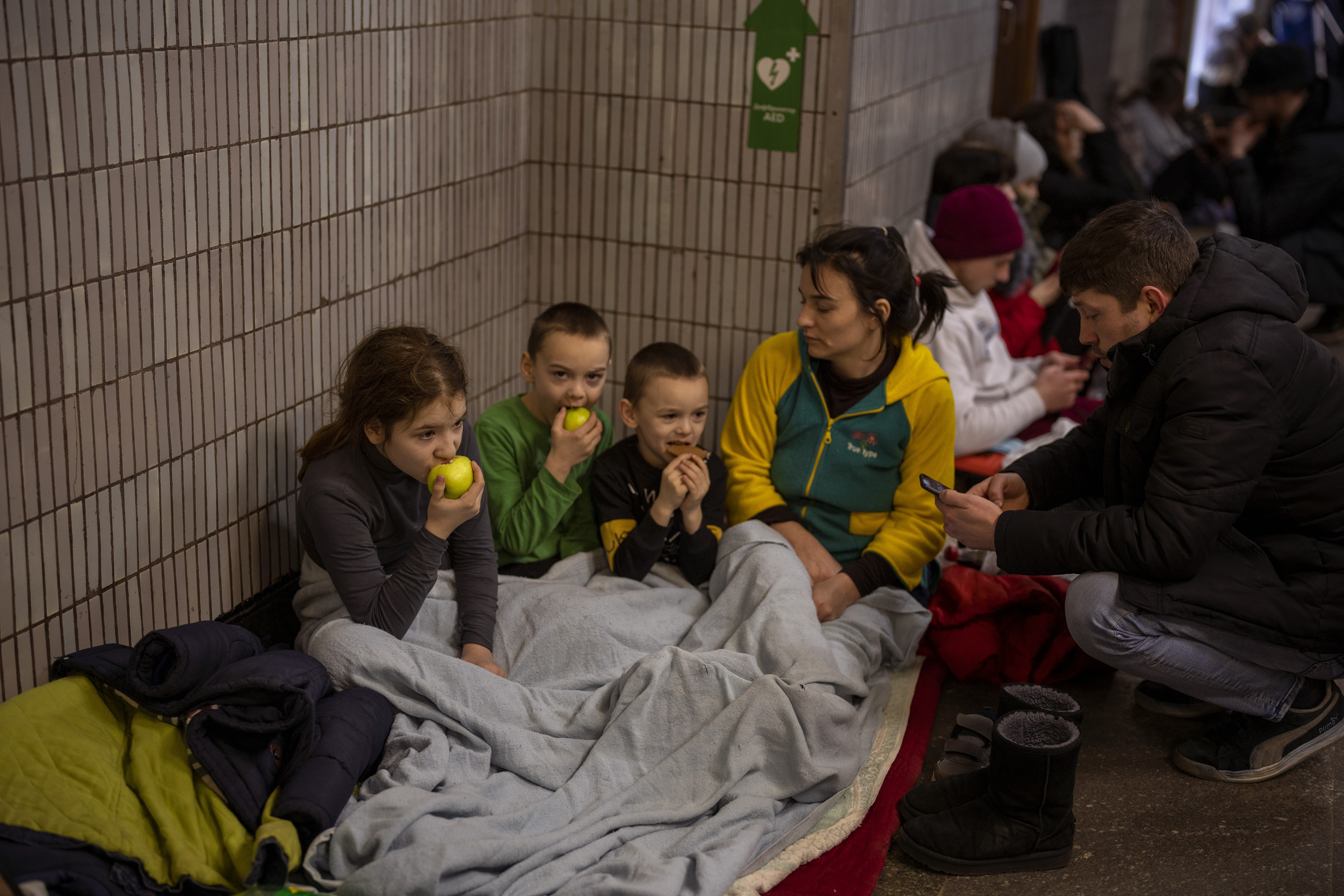
It remains unclear how many people overall have died so far. Ukrainian officials reported at least 137 deaths on their side from the first full day of fighting and claimed hundreds on the Russian one. Russian authorities released no casualty figures.
UN officials reported 25 civilian deaths, mostly from shelling and airstrikes, and said that 100,000 people were believed to have left their homes. They estimate that up to four million could flee if the fighting escalates.
Mr Zelensky tweeted that he and US President Joe Biden spoke by phone and discussed “strengthening sanctions, concrete defence assistance and an antiwar coalition.”
Mr Biden subsequently signed a memo clearing the way for the US to expedite up to 600 million dollars (£448 million) in emergency military assistance to the Ukrainian government, though it was not immediately clear how quickly the aid would flow.
Mr Zelensky’s whereabouts were kept secret after he told European leaders in a call Thursday that he was Russia’s No 1 target — and that they might not see him again alive.
His office later released a video of him standing with senior aides outside the presidential office and saying that he and other government officials would stay in the capital.
He later appealed for cease-fire and warned in a bleak statement that multiple cities were under attack, but also posted a video just before 8am (6am London) to show he was still alive.
Facebook has said it is prohibiting Russian state media from running any advertising on or monetising from its platform.
The firm’s head of security policy, Nathaniel Gleicher, said in a statement: “We are now prohibiting Russian state media from running ads or monetising on our platform anywhere in the world.
“We also continue to apply labels to additional Russian state media.
“These changes have already begun rolling out and will continue into the weekend.” Mr Gleicher added Facebook was “closely monitoring” the situation in Ukraine and would “keep sharing steps we’re taking to protect people on our platform”.

‘This is the night they will storm’, Ukrainian president warns world from bunker
Ukrainian President Volodymyr Zelenskyy has issued a chilling warning to the world about Russia, stating: “This is the night they will storm”.
His warning came as invading Russian forces closed in on Ukraine’s capital on Friday, in an apparent encircling movement after a barrage of airstrikes on cities and military bases around the country.
In a video released Friday of himself and his senior aides outside the presidential office in Kyiv, Mr Zelenskyy reassured Ukrainians that he and other top officials would stay in the capital.
He later appealed for cease-fire and warned in a bleak statement that multiple cities were under attack.
With growing signs that Russia aims to overthrow him, Mr Zelenskyy told European Union leaders in a video link-up from his bunker late Thursday that it might be the last time they saw him alive.

Amid reports of hundreds of casualties — including shelling that sliced through a Kyiv apartment building and pummelled bridges and schools — there also were growing signs that Russia may be seeking to overthrow Ukraine’s government, which US officials have described as Vladimir Putin’s ultimate objective. It would be his boldest effort yet to redraw the world map and revive Moscow’s Cold War-era influence.
As fighting persisted, Ukraine’s military reported shooting down an II-76 Russian transport plane carrying paratroopers near Vasylkiv, a city 25 miles south of Kyiv, an account confirmed by a senior American intelligence official. It was unclear how many were on board. Transport planes can carry up to 125 paratroopers.
Russia has vetoed a UN Security Council resolution telling Moscow to stop attacking Ukraine and withdraw all troops immediately.
The veto was expected, but the United States and its supporters argued that the effort would highlight Moscow’s international isolation.
The 11-1 vote — with China, India and the United Arab Emirates abstaining — showed significant but not total opposition to Russia’s invasion of its smaller, militarily weaker neighbour.
The resolution’s failure paves the way for backers to call for a swift vote on a similar measure in the 193-member UN General Assembly, where there are no vetoes.
There was no immediate timetable for a potential Assembly vote.
Spearheaded by the US and Albania, the Security Council resolution would have deplored Russia’s “aggression” against Ukraine.
It called for Moscow immediately to pull out its military and stop using force against Ukraine, and to reverse a decision to recognise two separatist areas in eastern Ukraine as independent.
Unlike Security Council resolutions, General Assembly resolutions are not legally binding, but they can function as statements of world opinion.
In an Assembly meeting on Wednesday as Moscow’s invasion loomed, dozens of countries condemned Russia or expressed solidarity with Ukraine.
Russia and ally Syria defended Moscow’s moves.
Kyiv officials have warned residents that street fighting against Russian forces has begun and urged people to seek shelter, as the country's President released a new video vowing to stay in the capital.
Key points:
Cities in Ukraine were reportedly hit by Russian Kalibr cruise missiles launched from the Black Sea
A missile hit an apartment building on the south-western outskirts of Kyiv
Russia has vetoed a UN Security Council resolution demanding it stop attacking Ukraine
The warning issued on Saturday advised residents to remain in shelters, avoid going near windows or balconies, and to take precautions against being hit by debris or bullets.
Meanwhile, Ukraine's military command said areas near the cities of Sumy, Poltava and Mariupol were hit by air strikes on Friday, with Russian Kalibr cruise missiles launched at the country from the Black Sea.
On Saturday morning, Russian and Ukrainian forces clashed on the outskirts of the Ukrainian capital.
Ukraine's President Volodymyr Zelenskyy, speaking in a video message from outside his Kyiv office on Saturday morning, was defiant.
"We will not put down weapons, we will defend our state," Mr Zelenskyy said.
Mr Zelenskyy said earlier that Russian troops would attempt to take Kyiv before dawn, warning the nation's fighters to be on alert and saying: "We cannot lose the capital."
"This night will be more difficult than the day. Many cities of our state are under attack," he said in an earlier video address.
The Ukrainian military said in a Facebook post on Saturday that Russian troops attacked an army base in Kyiv but the assault was repelled.LIVE UPDATES: Read our blog for the latest on Russia's invasion of Ukraine.
Kyiv Mayor Vitali Klitschko said a missile hit an apartment building on the south-western outskirts of the city near Zhuliany airport.
Mr Klitschko said there were no casualties immediately reported but that rescue workers were heading to the scene.
Ukranian President Volodymyr Zelenskyy says Ukrainians will defend their country.
The Russian military laid claim on Friday to the southern Ukraine city of Melitopol.
Still, it was unclear how much of Ukraine was still under Kyiv's control and how much or little Russian forces had seized.
Russian leader Vladimir Putin unleashed a full-scale invasion on Thursday that has killed dozens of people, forced more than 100,000 to flee Ukraine, according to the UN, and sparked fears of a new cold war in Europe.
NATO bolsters eastern nations
As fighting persisted, Ukraine's military said it had shot down an II-76 Russian transport plane carrying paratroopers near Vasylkiv, a city 40 kilometres south of Kyiv, an account confirmed by a senior American intelligence official, according to the Associated Press.
It was unclear how many were on board. Transport planes can carry up to 125 paratroopers.
A second Russian military transport plane was shot down near Bila Tserkva, 85 kilometres south of Kyiv, according to two American officials with direct knowledge of conditions on the ground in Ukraine.
The Russian military has not commented on either plane.
US President Joe Biden and his NATO partners (shown in green in the map below) agreed to send thousands of troops to help protect allies along the alliance's eastern edge.
Mr Biden spoke later with Mr Zelenskyy to convey his support and "commended the brave actions of the Ukrainian people who were fighting to defend their country", the White House said.
Late on Friday, Mr Biden signed a memo authorising up to $350 million in additional security assistance to Ukraine, bringing the total security assistance approved for Ukraine to $1 billion over the past year.
It was not immediately clear how quickly the aid would flow.
Mr Zelenskyy told European Union leaders in a video call from his bunker late on Thursday that amid growing signs that Russia aimed to overthrow him, it might be the last time they saw him alive.
But on Friday Mr Zelenskyy released a video of himself and his senior aides outside the presidential office in Kyiv to reassure Ukrainians that he and other top officials would stay in the capital.
Mr Zelenskyy was urged to evacuate Kyiv at the behest of the US government but turned down the offer, according to a senior American intelligence official with direct knowledge of the conversation.
The official quoted the President as saying, "The fight is here," and he needed anti-tank ammunition but "not a ride".
The Russian assault, anticipated for weeks by the West, amounts to Europe's largest ground conflict since World War II.
In a window into how the increasingly isolated Mr Putin views Ukraine and its leadership, he urged Ukraine’s military to surrender, saying: "We would find it easier to agree with you than with that gang of drug addicts and neo-Nazis who have holed up in Kyiv and have taken the entire Ukrainian people hostage."
Mr Putin has not disclosed his ultimate plans for Ukraine. Russian Foreign Minister Sergey Lavrov: "We want to allow the Ukrainian people to determine its own fate".
Mr Putin's spokesman Dmitry Peskov said Russia recognised Mr Zelenskyy as the President, but would not say how long the Russian invasion could last.
Russia vetoes UN Security Council resolution
Western countries have announced a barrage of sanctions on Russia, including blacklisting its banks and banning technology exports.
But they have stopped short of forcing it out of the SWIFT system for international bank payments.
The US imposed sanctions on Mr Putin, Foreign Minister Sergei Lavrov, Defence Minister Sergei Shoigu and Chief of General Staff Valery Gerasimov.
The EU and Britain earlier froze any assets Mr Putin and Mr Lavrov held in their territory. Canada took similar steps.
Sports leagues moved to punish Russia, and even the Eurovision song contest banned the nation from the May finals in Italy.
Through it all, Russia remained unbowed, vetoing a UN Security Council resolution demanding that it stop attacking Ukraine and withdraw troops immediately.
The veto was expected, but the US and its supporters argued that the effort would highlight Moscow’s international isolation.
"We are united behind Ukraine and its people, despite a reckless, irresponsible permanent member of the Security Council abusing its power to attack its neighbour and subvert the UN and our international system," US ambassador Linda Thomas-Greenfield said after Russia cast its veto.The 11-1 vote, with China, India and the United Arab Emirates abstaining, showed significant but not total opposition to Russia's invasion of its smaller, militarily weaker neighbour.
Russia's UN ambassador Vassily Nebenzia thanked the Security Council members who did not support the draft, which he described as anti-Russian.
"Your draft resolution is nothing other than yet another brutal, inhumane move in this Ukrainian chessboard," Mr Nebenzia said.
ABC/wires
